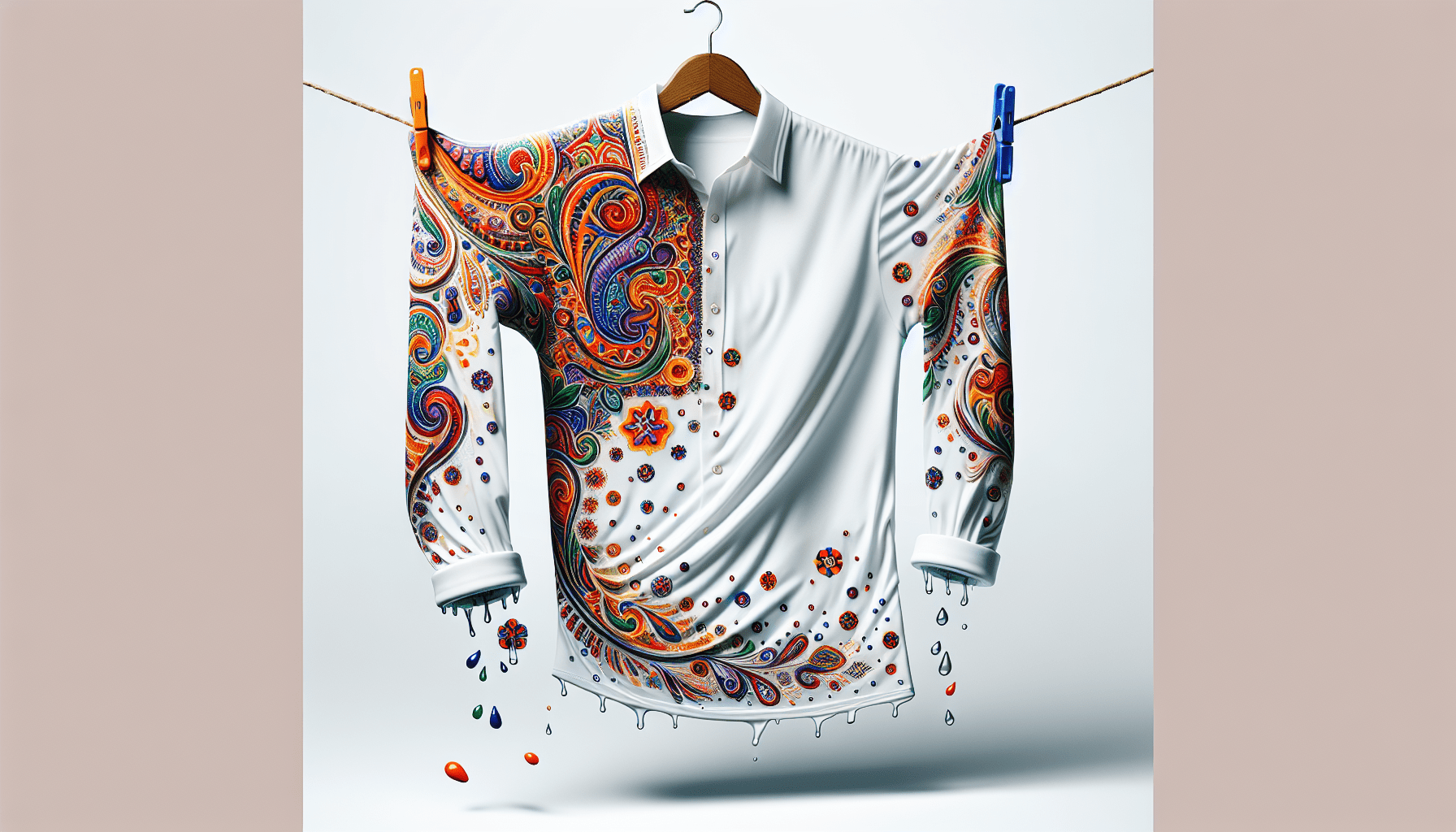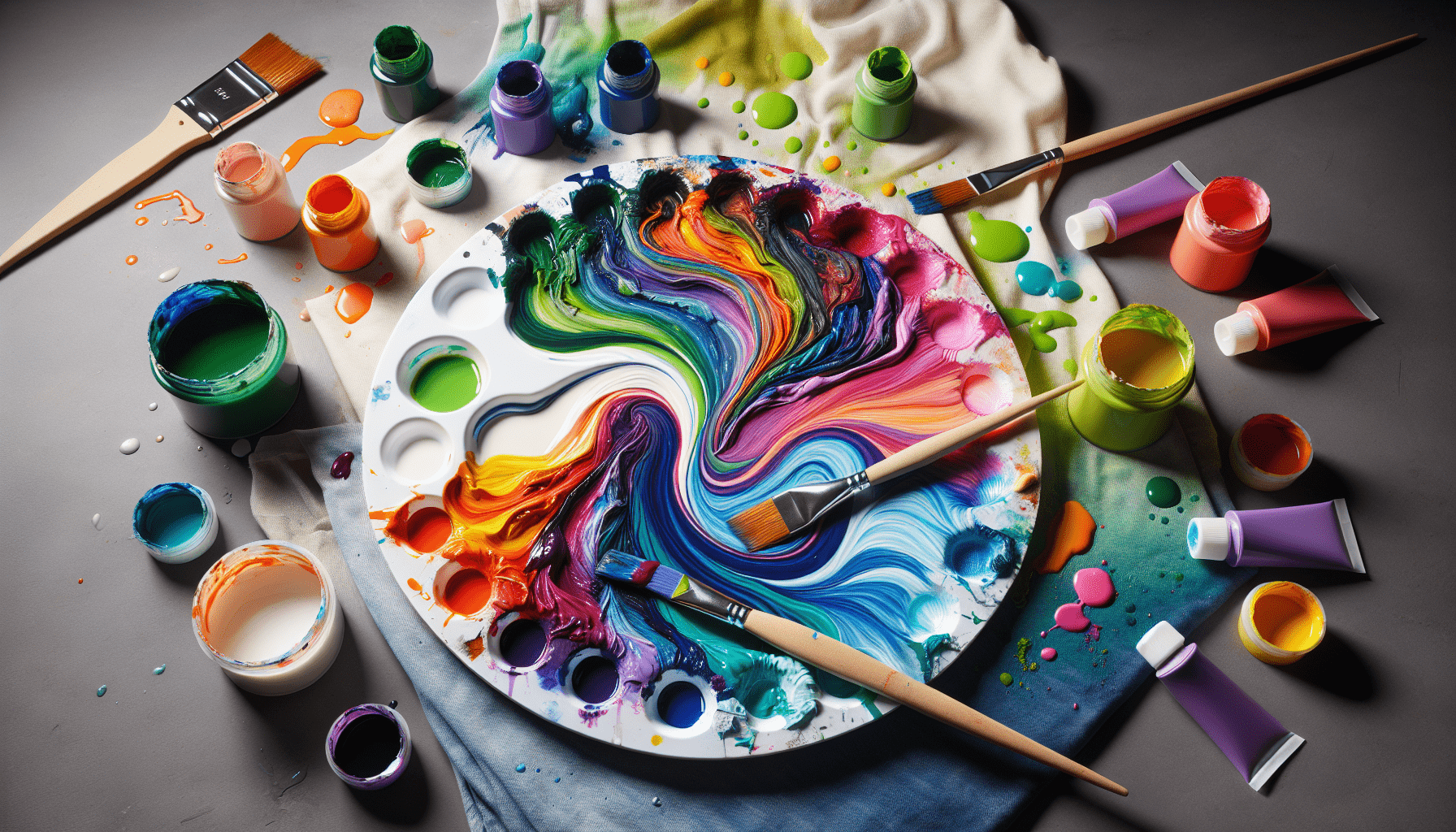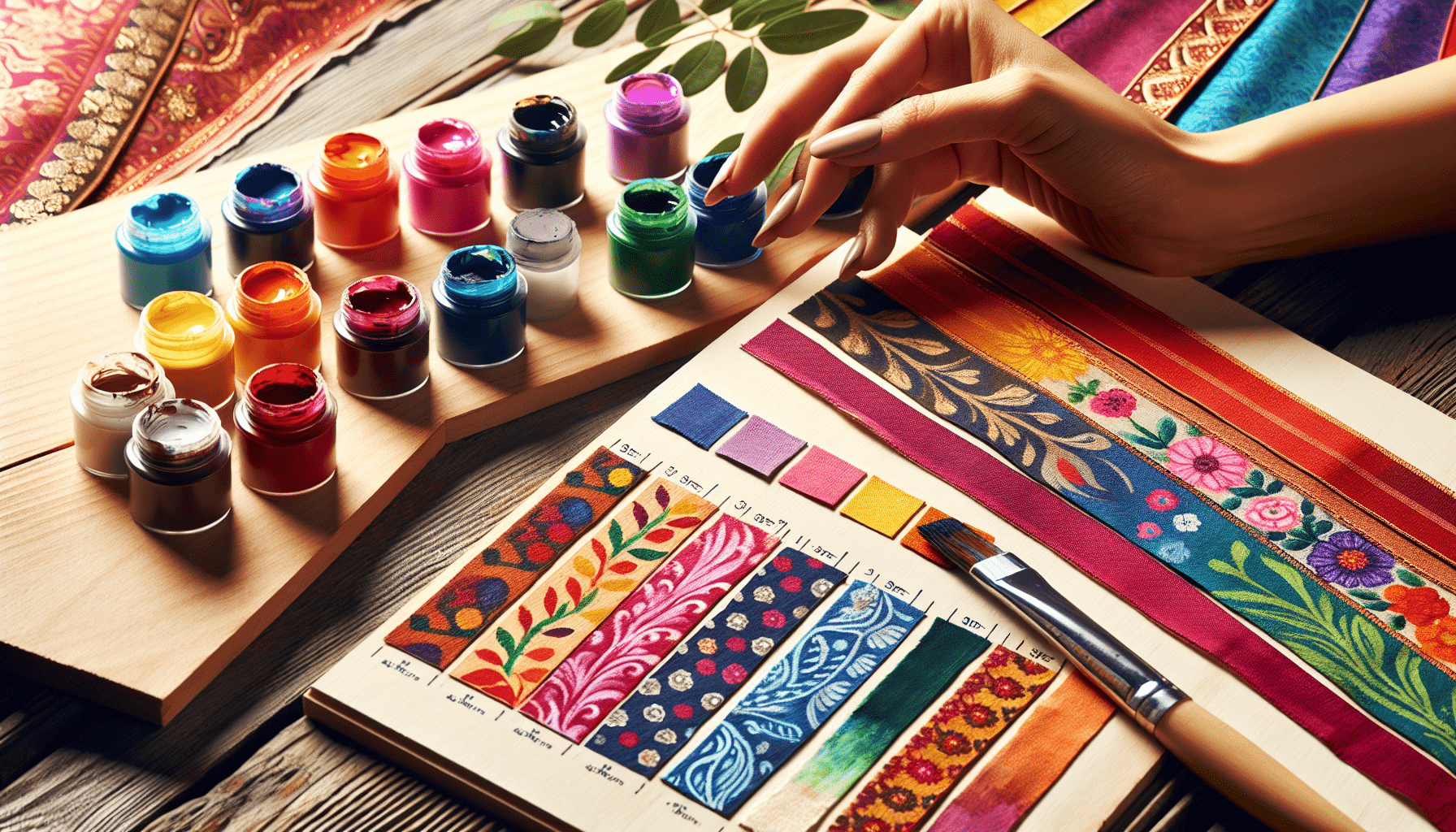Fabric paint is a versatile medium that allows individuals to add personalized designs and creative flair to various textiles. Before embarking on your next artistic endeavor, it is crucial to determine whether fabric paint is washable. This article delves into the question of whether fabric paint is indeed washable, exploring various factors that determine its washability and offering practical tips for preserving your artwork.
Introduction
Fabric paint is a versatile and popular choice for adding designs, patterns, and color to different types of fabrics. Whether you are a professional artist, a hobbyist, or simply looking to personalize your clothing or home decor, fabric paint is a fantastic option. In this article, we will explore the properties of fabric paint, factors affecting its washability, washing instructions for maintaining its longevity, methods for testing its effectiveness, tips for maintaining washability, removal methods for non-washable fabric paint, and alternative washable decoration methods.
What is Fabric Paint?
Definition
Fabric paint is a specialized type of paint that is specifically designed to adhere to various types of fabrics without cracking, peeling, or fading over time. It is formulated with additives that allow it to bond to the fabric fibers, creating long-lasting and vibrant designs.
Types
There are various types of fabric paint available on the market, each offering different characteristics and effects. Some common types include:
-
Acrylic Fabric Paint: This type of fabric paint is made from acrylic polymers and offers excellent adhesion and durability. It is available in a wide range of colors and finishes, such as matte, glossy, metallic, and glitter.
-
Fabric Dye: Fabric dye is a coloring agent that penetrates the fabric fibers, tinting them from within. Unlike fabric paint, it doesn’t create a layer on the fabric surface. While fabric dye is not technically fabric paint, it is often used for coloring fabrics and achieving vibrant, permanent results.
-
Fabric Spray Paint: Fabric spray paint is a convenient and easy-to-use option for creating quick and even coverage on larger fabric surfaces. It allows for easy blending and layering of colors and is commonly used for creating unique designs on clothing, upholstery, and other fabric items.
-
Puffy Paint: Puffy paint, also known as dimensional fabric paint, creates a three-dimensional effect when applied to fabric. It expands and puffs up when heated, resulting in raised textures. Puffy paint is often used for adding texture to fabric crafts and can be found in a wide array of colors and finishes.
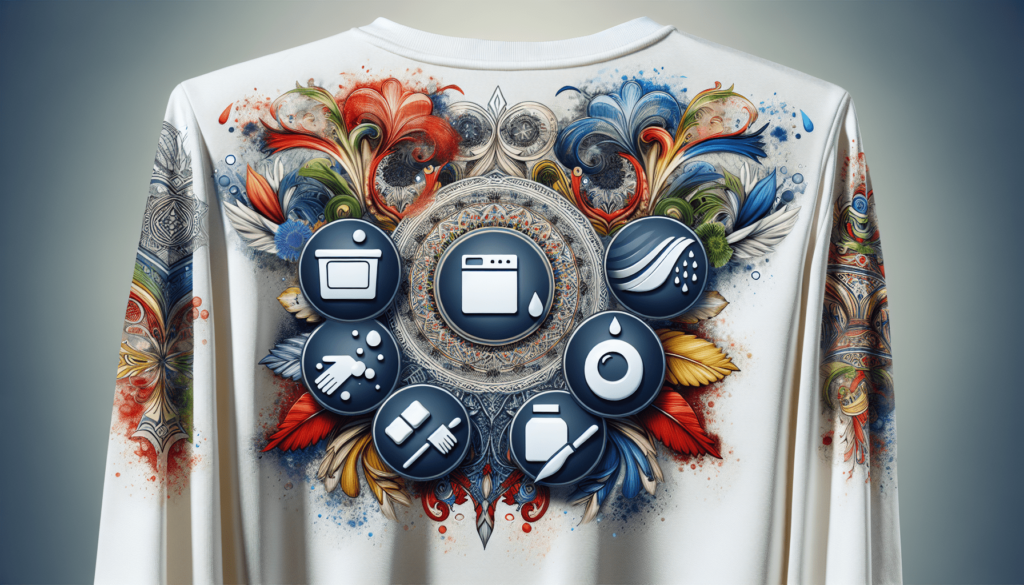
Properties of Fabric Paint
Washable
One of the key properties of fabric paint is its washability. Washable fabric paint refers to paint that can withstand regular washing and still maintain its color and appearance. Fabric paint that is not washable may fade, peel, or become damaged when exposed to washing, rendering the design less vibrant or completely ruined.
Colorfastness
Colorfastness refers to the ability of fabric paint to retain its original color without fading or bleeding when subjected to washing, light exposure, or other external factors. High-quality fabric paints are typically colorfast, ensuring that the design remains vivid and vibrant even after multiple washes.
Compatibility with Different Fabrics
Another important property of fabric paint is its compatibility with various types of fabrics. Different fabrics have different compositions and characteristics, which can affect how well the paint adheres and holds up over time. Good fabric paints are often labeled as suitable for use on multiple fabric types, ensuring that they are versatile and can be used on a wide range of projects.
Factors Affecting Washability
Quality of Fabric Paint
The quality of fabric paint plays a significant role in determining its washability. Higher-quality fabric paints are generally formulated with better binders and pigments, resulting in improved adhesion to fabric fibers and resistance to washing. It is recommended to invest in reputable brands known for their high-quality fabric paints to ensure optimal washability and longevity of your designs.
Fabric Type
Different types of fabrics have varying degrees of absorbency and texture, which can impact the washability of fabric paint. Some fabrics, such as cotton and polyester, tend to hold paint better and withstand washing more effectively, while others, like silk or satin, may require special care and attention. It is essential to consider the specific fabric type before applying fabric paint to ensure optimal washability.
Application Technique
The application technique used when applying fabric paint can also affect its washability. Proper and even application helps to ensure that the paint fully adheres to the fabric surface and minimizes the chances of flaking or peeling. It is important to follow the manufacturer’s instructions regarding application techniques to achieve the best washability results.
Heat Setting
Heat setting fabric paint is a crucial step in improving its washability. Heat setting involves applying heat, typically with an iron, to the painted fabric to help bond the paint to the fibers more securely. This process helps prevent the paint from washing out or fading during laundering. However, not all fabric paints require heat setting, so it is essential to refer to the manufacturer’s instructions for specific heat-setting guidelines.
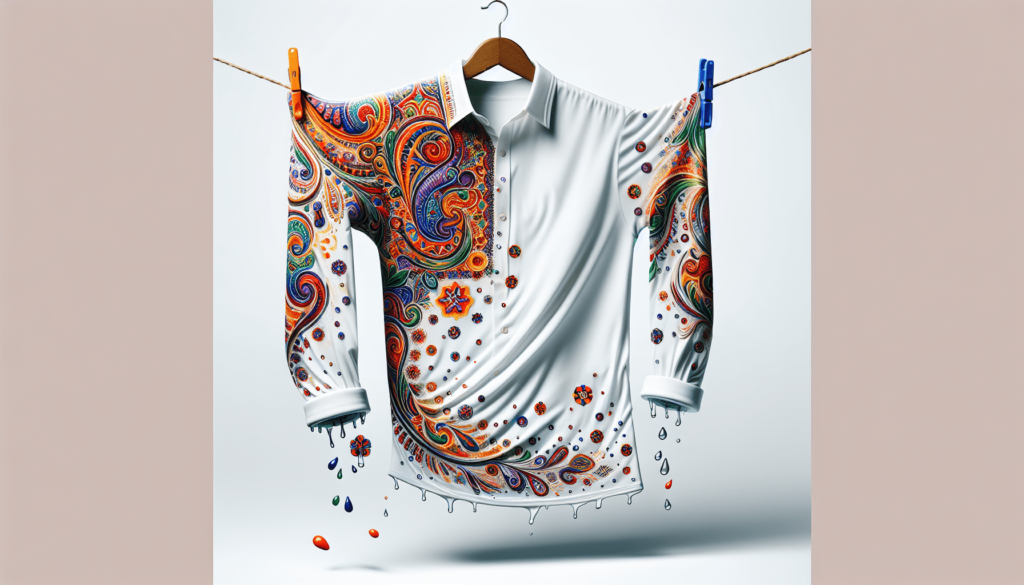
Washing Instructions
To ensure the longevity and washability of fabric paint, it is crucial to follow proper washing instructions. The following guidelines outline the steps for effectively cleaning fabric with paint:
Pre-Treatment
Before laundering the fabric, it is advisable to pre-treat any stains or spots on the painted surface. Gently blot the stain with a mild detergent or stain remover, being careful not to rub or scrub vigorously, as this may damage the paint. Allow the pre-treatment product to sit for a few minutes before proceeding to the washing step.
Machine Washing
When machine washing fabric with paint, it is recommended to turn the garment inside out to minimize friction and potential damage to the painted design. Use a gentle cycle with cold water and a mild detergent specifically formulated for delicate fabrics. Avoid using bleach or harsh chemicals that may cause fading or deterioration of the paint. Once the wash cycle is complete, promptly remove the fabric from the machine to prevent wrinkling.
Hand Washing
For delicate or intricately painted fabric, hand washing is the preferred method to ensure gentle handling of the design. Fill a basin or sink with cold water and a small amount of mild detergent suitable for delicate fabrics. Gently agitate the fabric in the soapy water, focusing on lightly rubbing any stained areas. Rinse the fabric thoroughly with cold water until the water runs clear, removing any remaining soap residue.
Drying
After washing, fabric with paint should be air-dried whenever possible. Lay the fabric flat on a clean towel or hang it on a drying rack in a cool, well-ventilated area away from direct sunlight or excessive heat. Avoid using a dryer, as the high heat and tumble action may cause the paint to fade, peel, or crack.
Ironing
If heat setting is required for the fabric paint, iron the painted fabric on the reverse side, using a low to medium heat setting suitable for the fabric type. Place a clean cloth or pressing cloth over the painted design to protect it from direct contact with the iron. Gently move the iron across the fabric in a smooth, sweeping motion, ensuring even heat distribution. Avoid applying too much pressure or leaving the iron in one spot for an extended period, as this could damage the paint or fabric.
Testing Washability
Before committing to a large-scale project or garment, it is wise to conduct several washability tests on a small fabric swatch or inconspicuous area of the painted fabric. The following tests can help determine the effectiveness and durability of the fabric paint:
Fabric Swatch Test
Cut a small piece of fabric with paint from the main project or use a separate fabric swatch. Wash the fabric according to the recommended instructions outlined by the manufacturer. After washing, inspect the fabric for any signs of fading, peeling, or changes in color. If the design remains intact and vibrant, it indicates good washability. However, if the paint shows signs of damage or deterioration, it may be necessary to reevaluate the choice of fabric paint or adjust the washing method.
Rub Test
Perform a rub test by gently rubbing a damp cloth or sponge over the painted fabric. Observe whether any color transfers onto the cloth or sponge. If the paint transfers or smudges easily, it suggests poor washability and potential color bleeding during regular washing. Paint that remains intact without transferring is an indication of better washability.
Water Test
Sprinkle water onto the painted fabric and observe how it behaves. If the water beads up and rolls off the fabric surface without penetrating the paint, it suggests good water resistance and washability. However, if the water soaks into the paint or causes it to soften or dissolve, it indicates poor washability and potential damage during laundering.
Tips for Maintaining Washability
To help maintain the washability and longevity of fabric paint, consider the following tips:
Avoid Harsh Detergents
When washing fabric with paint, opt for mild detergents specifically formulated for delicate fabrics. Harsh detergents containing bleach or strong chemicals can fade or damage the paint, resulting in decreased washability and durability.
Turn Inside Out
Turning the garment or fabric item inside out before washing helps protect the painted design from friction and potential damage caused by other items in the wash. This simple step can significantly contribute to maintaining the vibrancy and washability of the fabric paint.
Use Cold Water
Washing fabric with paint in cold water helps preserve the integrity of the paint and prevent color bleeding. Hot water can cause the paint to soften or dissolve, leading to fading or peeling. Always choose a cold water setting when washing fabric with paint to ensure optimal washability.
Gentle Cycle
When machine washing fabric with paint, select a gentle cycle to minimize agitation and reduce the risk of the paint flaking, peeling, or becoming damaged. Gentle cycles are specifically designed for delicate fabrics and provide a more gentle washing action that helps maintain the washability of fabric paint.
Air Dry
Avoid using a dryer to dry fabric with paint, as the high heat and tumbler action can cause the paint to crack, fade, or peel. Instead, opt for air drying by laying the fabric flat on a clean towel or hanging it on a drying rack in a well-ventilated area. Air drying helps preserve the vibrancy and washability of the fabric paint.
Removal of Non-Washable Fabric Paint
In some instances, you may encounter non-washable fabric paint, which requires removal. The following methods can help remove non-washable fabric paint from fabrics:
Commercial Paint Removers
Commercial fabric paint removers are specifically designed to dissolve and remove fabric paint from various types of fabrics. They often come in the form of gels or liquids and may require application, soaking, and rinsing. It is essential to follow the instructions provided by the manufacturer and conduct a patch test on an inconspicuous area of the fabric to ensure compatibility and prevent damage.
Home Remedies
There are several home remedies that may help remove non-washable fabric paint from fabrics. These include using rubbing alcohol, nail polish remover (containing acetone), or a mixture of dish soap and hydrogen peroxide. When using these remedies, it is crucial to proceed with caution, test them on a small, inconspicuous area of the fabric, and rinse thoroughly after removal.
Alternative Washable Decoration Methods
If you are looking for washable decoration methods that do not involve fabric paint, consider the following options:
Iron-On Transfers
Iron-on transfers are a popular and washable way to add designs to fabrics. These transfers consist of pre-printed designs or patterns that can be applied to the fabric using heat from an iron. Iron-on transfers are available in various colors and designs, allowing for quick and easy customization of clothing, bags, and other fabric items.
Embroidery
Embroidery is a traditional and washable decoration method that involves stitching designs onto fabric using needle and thread. Embroidered designs are durable and can withstand regular laundering without fading or peeling. Embroidery offers a wide range of design possibilities and allows for intricate details and textures to be added to fabrics.
Fabric Markers
Fabric markers are washable and easy-to-use tools for adding designs and color to fabric. These markers are specifically formulated to adhere to and bond with fabric fibers, providing a long-lasting and vibrant finish. Fabric markers offer precision and control, making them ideal for detailed designs and customizations on garments, accessories, and home decor items.
Conclusion
Fabric paint is a versatile and washable option for adding color, designs, and patterns to various types of fabrics. Understanding the properties of fabric paint, factors affecting its washability, and proper washing instructions is essential for maintaining vibrant and long-lasting designs. By following the recommended tips and conducting washability tests, you can ensure that your fabric paint projects remain intact and retain their original appearance, even after multiple washes. In cases where non-washable fabric paint needs to be removed, commercial paint removers or home remedies can be utilized. Additionally, alternative washable decoration methods such as iron-on transfers, embroidery, and fabric markers provide viable alternatives for creating personalized and washable fabric designs. With proper care and attention, fabric paint can be a reliable and durable choice for adding creativity and individuality to your fabric projects.
